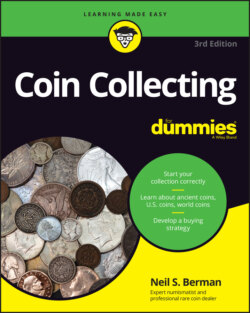Читать книгу Coin Collecting For Dummies - Neil S. Berman - Страница 51
Supply: Giving them what they want
ОглавлениеIf too many coins are made each year, and not enough people want them, prices remain low. On the other hand, if a coin’s supply falls short of demand, prices rise.
Back in 1986, when the PCGS began certifying U.S. coins, demand for their product was huge, and the supply was low, even though PCGS did its best to grade as efficiently as possible. I remember seeing my first PCGS-certified MS-65 common date Morgan silver dollar. It was a thing of beauty, all bright, shiny, and nearly perfect. It was also priced at $600. Now, many years later, hundreds of thousands of Morgan dollars have been certified by PCGS. Because the supply is large enough to satisfy the demand of most collectors, the price of a common-date PCGS-certified MS-65 Morgan dollar has dropped to less than $200.
A similar situation occurs each year when the new government-issued proof sets hit the market. The collectors who are lucky enough to receive the first sets often sell them for a nice profit, because everyone wants to own one. Later, as the U.S. Mint releases more sets, the price drops because supply rises to meet demand.
Buy proof sets directly from the U.S. Mint each year if you like these kinds of coins. If you miss out for some reason, wait until the market has cooled down a bit and prices stabilize. You may be waiting for a few months, but be patient. In most cases, you’ll have to pay more than the issue price, but in general, you’ll avoid the hefty premiums that are charged when the supply is low.
Supply and demand work opposite each other. Just as demand can be manipulated to raise prices, so can supply. Again, become aware of any funny business in the market by researching potential purchases carefully. Ask your adviser whether they know of any behind-the-scenes activity that may affect the supply of the coin in which you’re interested.
